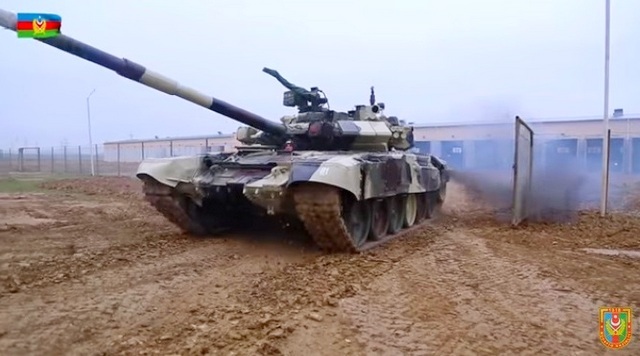
Image source: vestnik-rm.ru
By the beginning of the operation in Nagorno-Karabakh, the Azerbaijani ground forces were armed with about a hundred T-90S main battle tanks.
This technique in its tactical and technical characteristics significantly surpassed not only the old modifications of the T-72 available to the Armenian side, but also the Azerbaijani T-72 "Aslan"modernized with the help of the Israelis.
The latter were significantly inferior in survivability, which, in principle, is not surprising, so, the mounted dynamic protection "Contact" began to be replaced in the Soviet Army, in the late 80-ies. T-90S have a powerful multi-layer dynamic protection, reinforced with built-in "reactive armor" of the second generation, capable of resisting the most common in the territory of the post-Soviet space sub-caliber armor-piercing shells, anti-tank missiles and rocket grenades.
In addition, the optoelectronic suppression system on the turret reliably covers the tank with aerosol clouds, which significantly reduce the use of high-precision weapons.
The "Nineties" began to be used at the front from the very beginning, and, according to data published in the Oryx blog, which scrupulously calculated the losses of the parties, only 3 cars "went into the minus" during the conflict. Of these, only one was destroyed directly in the battle, the other two were damaged and abandoned by the crews.
Then these tanks, which, if they could have been evacuated, would have definitely returned to service, were blown up by the soldiers of the Armenian units.
There are data on two more T-90,but, judging by the nature of the damage, they should be repaired fairly quickly.
It is known that such tanks also successfully fought in Syria, where they withstood the hits of the American TOW-2 ATGM.
Currently, the Russian army receives the latest, even more advanced T-90M, and its export modification, the T - 90SM, is focused on deliveries abroad.
